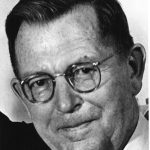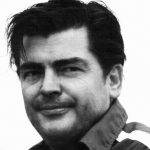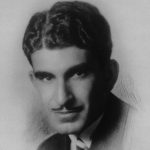Today, with the emphasis clearly on higher fuel economy and safety, it comes as no surprise that automakers around the world are designing automobiles that are aerodynamic, with low vehicle weight, low fuel consumption, lower emissions, and occupant safety as key engineering parameters. But if it were not for the groundbreaking work of Professor Wunibald Kamm of Germany, today’s engineers would be facing a much more difficult task. Dr. Kamm, even today, and perhaps even more so because of his foresight, is considered one of the greatest researchers in automotive engineering. His work included the fields of vehicle aerodynamics, driving dynamics, tire technology, lightweight construction techniques, engine combustion efficiency and wind tunnel techniques. But he was perhaps best known for his breakthroughs in reducing car turbulence at high speeds; the style of car bodywork based on his research has come to be known as the Kamm-effect, Kammback or Kamm-tail. It is a car design characterized by a long, tapering roof and an abrupt, cut-off tail.
Born in Switzerland in 1893, his family moved to Stuttgart, Germany in 1900 due to the illness of his mother. As fate would have it, he lived a block away from Gottlieb Daimler’s workshop and attended the same school as Daimler’s son, also named Gottlieb. The two became great friends and had planned to work together. Their studies were interrupted by World War I and both were called into service. The young Wunibald became an officer of the Bavarian Balloon Corps while the young Gottlieb perished as an infantryman on the French front. Following the war, Wunibald Kamm continued his research into practical observation and dirigible balloons, no doubt the beginning of his fascination with aerodynamics, which led to his Ph.D. In the early 1920s, Kamm worked as a design engineer for racing car engines at Daimler. From 1923 to 1926, he developed the Kamm “SHW Wagen” demonstrating the principles of extreme lightweight construction. Kamm’s SHW Wagen pioneered many automobile characteristics which are commonplace today, such as a semi-monococque aluminum body, front-wheel drive, 4-wheel independent suspension, coil springs with hydraulic shocks and a horizontally opposed engine. During the 1920s and ‘30s, Kamm spent most of his efforts on engine and vehicle design, and served as a professor at the Technical University of Stuttgart beginning in 1930. He built his teachings around the latest research results, instilling motivation to automotive engineers. The need at that time arose and he authored in 1936 a comprehensive text book on the automobile. He also founded the Research Institute for Automotive Engineering and Vehicle Engines in 1930, which conducted scientific research in close cooperation with the automotive industry.
Professor Kamm was the impetus behind new developments at the research institute, most notably a full-scale car wind tunnel with a moving belt for road simulation. This wind tunnel is still in operation today, operated by Daimler AG. During this time, his other projects included several prototypes of the “Kamm-Wagen” or “K-Wagen” with advanced aerodynamics, fuel injection technology, tire pressure control during motion and low section tires. These prototypes were designed and constructed as sedans, featuring the famous Kamm-back tail, and a spacious cabin. With their low air resistance, they provided high driving speed and low fuel consumption, with a high degree of directional stability. Furthermore, the original car was equipped with a tire inflation control system that allowed the tire pressure to increase or decrease based on the road surface.
During World War II, Kamm, like all of Germany’s elite scientists, were assigned to military projects. For Professor Kamm, that meant work primarily on off-road vehicles and aircraft engines. This experience, however, caught the attention of the United States, and following the war, Kamm was among the first hundred German scientists brought to America and stationed at Wright-Patterson Air Force Base in Dayton, Ohio. He served as a consulting engineer at Wright-Patterson until 1953 when he became a Research Professor at Stevens Institute of Technology in Hoboken, New Jersey. From 1955 to 1958 Kamm established and was Head of Mechanical Engineering at the Battelle-Institute in Frankfurt, Germany, a division of the Battelle Memorial Institute of Columbus, Ohio. In 1958, Dr. Kamm was awarded the German Service Cross, First Class, and in 1966, he received an honorary Ph.D. from the University of Braunschweig for his technical lifetime achievements.




